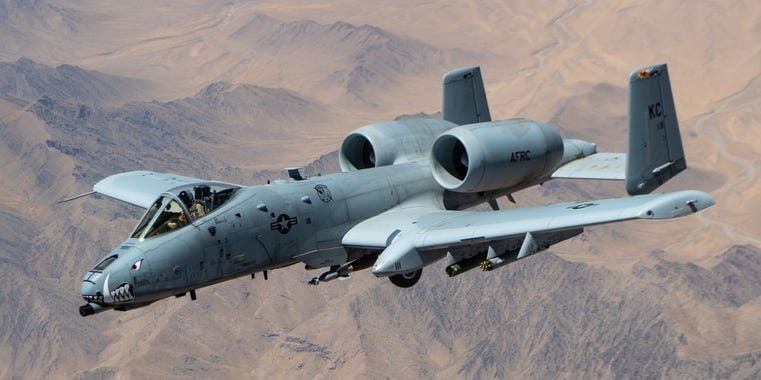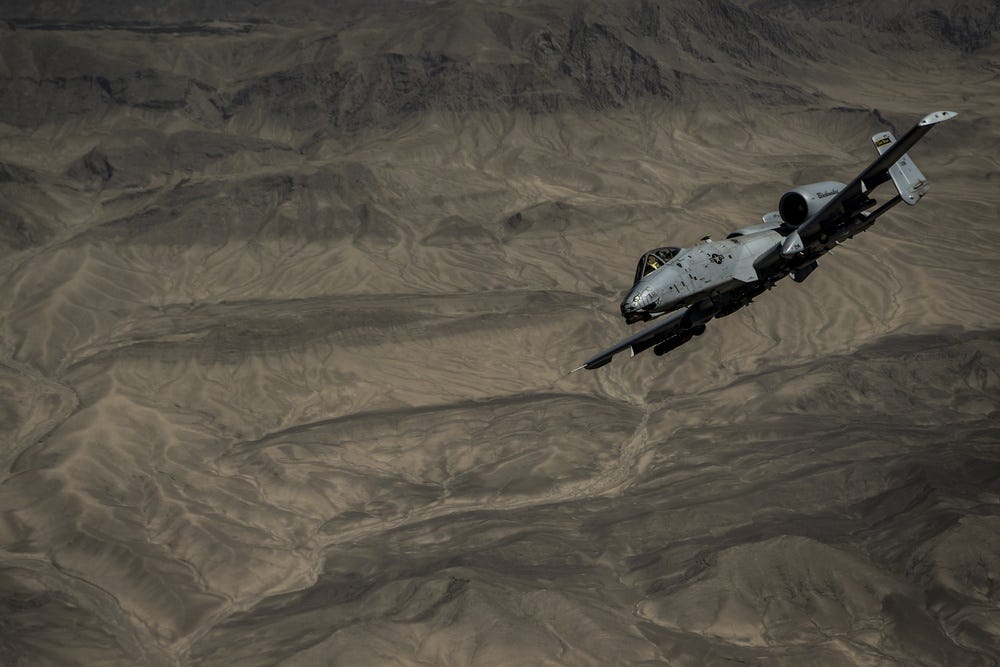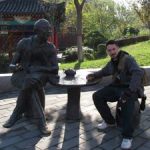
- An A-10 pilot received the Distinguished Flying Cross recently for heroism during a fight 10 years ago.
- His actions were part of what one official called "one of the most intense combat rescue missions of the Afghanistan war."
- The pilot not only coordinated 21 aircraft over 37 communications frequencies, but he put himself in harm's way to draw fire.
A US Air Force A-10 Thunderbolt II attack aircraft pilot received a prestigious award recently for his role in a dangerous rescue mission 10 years ago in Afghanistan, the Air Force said in a statement.
Lt. Col. Mike "Vago" Hilkert, a pilot with the 303rd Fighter Squadron, was awarded the Distinguished Flying Cross last month for heroism during what has been described as "one of the most intense combat rescue missions of the Afghanistan war."
During that six-hour fight on April 23, 2011, Hilkert not only coordinated the warfighting efforts of 21 aircraft over dozens of frequencies, but he also intentionally put himself and his plane in harm's way repeatedly to draw enemy fire away from rescue helicopters.
The 442nd Fighter Wing said Hilkert also helped save the lives of more than 30 people.
In the early hours of the day, when it was still dark, two Air Force HH-60 Pave Hawk helicopters carrying pararescuemen were sent out to respond to a downed Army helicopter.
One helicopter, call sign Pedro 83, dropped three pararescuemen onto a ridge several hundred feet from the crash site, where they found one of the Army helicopter pilots alive. The other Pave Hawk, Pedro 84, dropped two PJs closer to the crash site. The other pilot was dead when they arrived.
The PJs and their helicopters began taking heavy fire almost immediately.
Pedro 84 took heavy fire, and the flight engineer was shot in the leg, forcing the helicopter to return to base to get the airman medical attention and to grab another engineer. The two PJs, Staff Sgts. Zachary Kline and Bill Cenna, were left at the crash site.
Pedro 83 tried to get the three PJs and the surviving pilot out but had to cut the hoist, instead lowering the helicopter down into what the Air Force described as "a daring one-wheel hover" to get them back.
Supported by AH-64 Apache helicopters flying overwatch, Kline and Cenna took cover in a rock outcropping, but they were forced to abandon that position and relocate as enemy fire set off the munitions on the downed Army helicopter.

Hilkert, then a captain with the 74th Expeditionary Fighter Squadron, was supporting ground forces in his A-10 when the call for help came in over the Guard frequency.
"You need to understand that in a combat zone using Guard is sacred — a last resort," Lt. Col. Rick Mitchell, the 442d Operations Group deputy commander who presented Hilkert with the DFC, said in a statement, calling it "a true sign that things are bad, and someone needs help."
Hilkert, fueled in part by Rip-It energy drinks and flying Hawg 73, joined forces with Capt. Rustin "Trombone" Traynham and Lt. Col. David "Seymour" Haworth in Hawg 71 and 74 respectively, forming Sandy 1, a force of three A-10s.
They fired rockets into the valley while Hilkert established airspace restriction and communications relays for coordinating the fight.
The rockets gave Kline and Cenna a short reprieve before they soon found themselves taking heavy machine gun fire at close range.
Hilkert managed to identify the threat and relay targeting information to the other two A-10s while refueling, which is no easy task, and the two other pilots opened fire with their 30 mm cannons, "saving Kline's and Cenna's lives," the Air Force said.
Two groups of 16 Army quick reaction force soldiers landed at two different locations later that morning, immediately coming under fire. One soldier was killed, and a number of others were wounded.
Hilkert tracked one group with his binoculars while monitoring the other with his targeting pod. He also coordinated the efforts of the attack helicopters, tanker, intelligence, surveillance and reconnaissance assets, and the other attack aircraft to shield ground forces from friendly fire while tracking enemy positions.
Two rescue helicopters supported by two Apaches and two A-10s flown by Hilkert and Haworth flew in to evacuate a wounded soldier, but the helicopters kept having to fall back amid heavy incoming fire.
To draw the fire away from the helicopters trying to carry out a rescue mission, Hilkert repeatedly flew his aircraft into harm's way. The Apaches then hammered the enemy positions with Hellfire missiles.
Another rescue helicopter flew in and got Kline and Cenna, who also managed to get the fallen Army pilot out as well.
Though the Air Force praised Hilkert, saying that his "skill and vigilance led to the securing of two landing zones, rescuing the two Guardian Angels, and recovering the downed pilot and evacuation of the 32 soldiers in the QRF team," he said the experience was "bittersweet."
"I'm honored to be amongst a group of heroes that did their best with a bad situation," he said in a statement. "Several people lost their lives during this mission, so it wasn't all high fives when we got home. We flew back to Kandahar in silence."
Hilkert is the fourth Air Force pilot who participated in that mission to earn the Distinguished Flying Cross. Additionally, two pararescue airmen received Silver Stars, as did two helicopter pilots.
